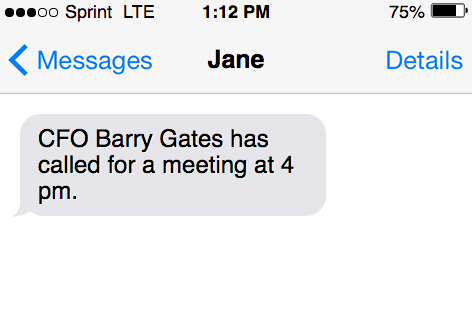What’s an appositive phrase? And how are they used in American English? How do they interact with commas and restrictive elements? Learn all about appositive phrases in this short English grammar worksheet.
What are appositives?
Appositives are nouns or pronouns (used along with modifiers) that are set beside another noun or pronoun. The function of the appositive is to explain or describe the noun/pronoun.
Let’s look at an example to understand this better:
In this example, the word laptop is a noun. Dell Vostro model is another noun, which describes the laptop. And the modifier word ‘latest’ is getting used.
In this case, ‘the latest Dell Vostro model’ is the appositive phrase. By using this phrase, the laptop is being described clearly.
Let’s look at another example with slightly different punctuation:
- The Chief Medical Officer, Dr. Flora, will be seeing patients from 2 pm to 5 pm on Fridays.
In the above example, the noun being described is Chief Medical Officer. The phrase used to describe her is her name, Dr. Flora. Making it the appositive phrase.
An appositive is essentially bonus or extra information being provided. It would be interesting to look at the origin of the word appositive.
It comes from the word appose, which means alongside or near. For all practical purposes, the meaning of the word resembles juxtapose. It does not have any relation to opposing, as some people think.
In the world of grammar, an element is in apposition to another, if it provides extra information about it.
How are commas and appositives used?
There are certain grammar rules that clearly explain how commas should be used with appositives. It is important to know and understand those rules.
One rule is that when the appositive phrase is essential to the noun’s meaning, then commas should not get used. This is a situation where the appositive would generally get used before the noun or pronoun.
Let’s look at an example to understand this:
- CFO Barry Gates has called for a meeting at 4 pm.
In this example, CFO is the noun, and the appositive used is Barry Gates. Here, the appositive Barry Gates is essential for the noun. Without the appositive, one will not know who the CFO is. Hence, there is no comma needed.
When the noun used in the sentence can be identified on its own, then the appositive phrase needs to have commas.
According to this rule, a comma is needed before the appositive in order to separate it from the noun. A comma is also placed after the appositive to separate it from the rest of the sentence.

An example will make this clear:
- Dr. Malcom, our anatomy professor, will be assigning the grades.
Here, Dr. Malcolm is the noun and can be identified distinctly. The appositive ‘anatomy professor’ provides additional information and ‘our’ acts as a modifier for the appositive. So, it is separated using commas.
Examples in sentences
- My daughter, who won the drawing competition, will be here soon.
- My friend Kris loves animals.
- Carol, my faithful assistant, will be there to guide you through the process.
How are commas and restrictive elements used?
Here, it is important to understand what a restrictive element is. As the name suggests, a restrictive element restricts the meaning of the word being modified.
It is therefore considered essential to the sentence’s meaning. Hence, keeping in mind the above rule, commas should not get used.

To understand this, look at this example:
- Agatha Christie’s novel Murder on the Orient Express is my all-time favorite novel.
In this sentence, we do not use a comma because the book title is essential for the sentence to be complete. Since Agatha Christie has written many novels, you need to mention which is your favorite.
Examples in sentences
- The children needed bags that were durable.
- A company that works with the government needs to be careful how they use data.
How to use appositive phrases
Appositive phrases describe and provide additional information about a noun or pronoun. The usage and punctuation used for the phrases depend on how it is used.
- First, it should be decided whether an essential or non-essential phrase is being. If it is an essential phrase, there is no need to use commas to set off the appositive.
- If the phrase is non-essential, then commas need to be used to separate the appositive from the noun and the rest of the sentence.
- The appositive must be used immediately after the noun to ensure its meaning is clear.
Difference between appositive phrases and direct address
An appositive phrase is used to describe a noun or pronoun by providing additional information about it. When used with a name, it can be preceded by an appositive phrase that describes the name (eg, CEO).
The appositive phrase can also be mentioned after the noun (eg, The car, which was a red sedan).
A direct address, on the other hand, uses the name or title of a person to address them. Let’s understand this with an example.
Julie liked the concert. In this sentence, there is a reference made to Julie and the concert. It is being said by someone about Julie and not to Julie.

Now, look at this sentence:
- Julie, did you like the concert?
This sentence has a direct address where Julie is being addressed. The sentence (in this case, question) is directed to Julie. This is known as a direct address.
The direct address uses a comma to separate the person’s name from the remainder of the sentence.
The name can be either at the start of the sentence, the middle, or the ending. Apart from the name, even a title can be used.
Examples in sentences
- Robin, come with me to the mall.
- Doctor, can you come quickly?
- Can you tell me, sir, why did you ring the bell?
- Are you ready to come to the theatre, Marilyn?
Sources
- Appositives – What They Are and How to Use Them
- Restrictive and Nonrestrictive Elements
- Commas with direct address
- Commas with appositives
FAQs
What is an appositive phrase?
An appositive phrase is a noun, a noun phrase, or series of nouns that renames the noun next to it
What is an appositive noun phrase?
An appositive noun phrase is a type of noun phrase that provides extra information about the subject or objects of a sentence
How do you use a nonrestrictive appositive phrase?
Depending on the tone you want to achieve and the context, you may also choose either parentheses or an em dash to put the nonrestrictive appositive phrase together.
How do I determine what the nonessential appositive phrase is?
To determine an essential or a nonessential appositive phrase, remove the appositive phrase from the sentence altogether.
What are appositive phrase examples?
- Robin, come with me to the mall.
- Doctor, can you come quickly?
- Can you tell me, sir, why did you ring the bell?
- Are you ready to come to the theatre, Marilyn?
Are noun phrases the same as appositive phrase?
No. Although there are noun appositive phrases that function in their own regard.
Inside this article
Fact checked:
Content is rigorously reviewed by a team of qualified and experienced fact checkers. Fact checkers review articles for factual accuracy, relevance, and timeliness. Learn more.
Core lessons
Glossary
- Abstract Noun
- Accusative Case
- Anecdote
- Antonym
- Active Sentence
- Adverb
- Adjective
- Allegory
- Alliteration
- Adjective Clause
- Adjective Phrase
- Ampersand
- Anastrophe
- Adverbial Clause
- Appositive Phrase
- Clause
- Compound Adjective
- Complex Sentence
- Compound Words
- Compound Predicate
- Common Noun
- Comparative Adjective
- Comparative and Superlative
- Compound Noun
- Compound Subject
- Compound Sentence
- Copular Verb
- Collective Noun
- Colloquialism
- Conciseness
- Consonance
- Conditional
- Concrete Noun
- Conjunction
- Conjugation
- Conditional Sentence
- Comma Splice
- Correlative Conjunction
- Coordinating Conjunction
- Coordinate Adjective
- Cumulative Adjective
- Dative Case
- Determiner
- Declarative Sentence
- Declarative Statement
- Direct Object Pronoun
- Direct Object
- Diction
- Diphthong
- Dangling Modifier
- Demonstrative Pronoun
- Demonstrative Adjective
- Direct Characterization
- Definite Article
- Doublespeak
- False Dilemma Fallacy
- Future Perfect Progressive
- Future Simple
- Future Perfect Continuous
- Future Perfect
- First Conditional
- Irregular Adjective
- Irregular Verb
- Imperative Sentence
- Indefinite Article
- Intransitive Verb
- Introductory Phrase
- Indefinite Pronoun
- Indirect Characterization
- Interrogative Sentence
- Intensive Pronoun
- Inanimate Object
- Indefinite Tense
- Infinitive Phrase
- Interjection
- Intensifier
- Infinitive
- Indicative Mood
- Participle
- Parallelism
- Prepositional Phrase
- Past Simple Tense
- Past Continuous Tense
- Past Perfect Tense
- Past Progressive Tense
- Present Simple Tense
- Present Perfect Tense
- Personal Pronoun
- Personification
- Persuasive Writing
- Parallel Structure
- Phrasal Verb
- Predicate Adjective
- Predicate Nominative
- Phonetic Language
- Plural Noun
- Punctuation
- Punctuation Marks
- Preposition
- Preposition of Place
- Parts of Speech
- Possessive Adjective
- Possessive Determiner
- Possessive Case
- Possessive Noun
- Proper Adjective
- Proper Noun
- Present Participle
- Prefix
- Predicate



